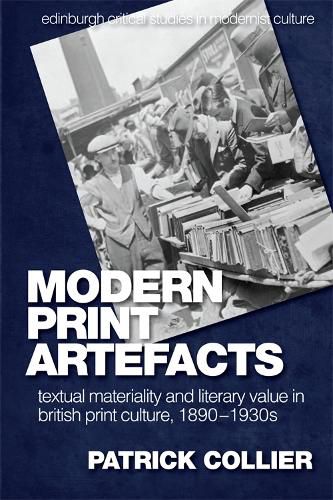Readings Newsletter
Become a Readings Member to make your shopping experience even easier.
Sign in or sign up for free!
You’re not far away from qualifying for FREE standard shipping within Australia
You’ve qualified for FREE standard shipping within Australia
The cart is loading…






This study focuses on the close connections between literary value and the materiality of popular print artefacts in Britain from 1890-1930. The book demonstrates that the materiality of print objects paper quality, typography, spatial layout, use of illustrations, etc. became uniquely visible and significant in these years, as a result of a widely perceived crisis in literary valuation. In a set of case studies, it analyses the relations between literary value, meaning, and textual materiality in print artefacts such as newspapers, magazines, and book genres artefacts that gave form to both literary works and the journalistic content (critical essays, book reviews, celebrity profiles, and advertising) through which conflicting conceptions of literature took shape. In the process, it corrects two available misperceptions about reading in the period: that books were the default mode of reading, and that experimental modernism was the sole literary aesthetic that could usefully represent modern life.
$9.00 standard shipping within Australia
FREE standard shipping within Australia for orders over $100.00
Express & International shipping calculated at checkout
This study focuses on the close connections between literary value and the materiality of popular print artefacts in Britain from 1890-1930. The book demonstrates that the materiality of print objects paper quality, typography, spatial layout, use of illustrations, etc. became uniquely visible and significant in these years, as a result of a widely perceived crisis in literary valuation. In a set of case studies, it analyses the relations between literary value, meaning, and textual materiality in print artefacts such as newspapers, magazines, and book genres artefacts that gave form to both literary works and the journalistic content (critical essays, book reviews, celebrity profiles, and advertising) through which conflicting conceptions of literature took shape. In the process, it corrects two available misperceptions about reading in the period: that books were the default mode of reading, and that experimental modernism was the sole literary aesthetic that could usefully represent modern life.